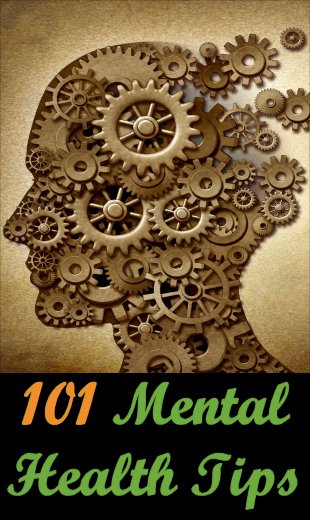41 Facts About Autism Spectrum Disorder
Autism (or, more accurately, Autism Spectrum Disorder, or ASD, but these terms are all used more or less interchangeably) is still largely misunderstood, so this article lays out some of the facts (and myths) about this condition which, in spite of what you may have read or heard, is on the increase in countries such as the USA.
Needless to say, any figures quoted here are current as at the time I wrote this article (in August 2019).
- Autism is the fastest-growing developmental disability in the USA today.
- It was first mentioned and diagnosed back in 1943, by a Dr. Leo Kanner, although it was a rare phenomenon back then.
- Autism is not a disease (i.e. you cannot “catch” it from somebody who has it) but a developmental disorder.
- It is estimated that about 70 million people in the world currently have ASD.
- ASD affects 1 in 59 children in the USA.
- Boys are about four times more likely to have autism than girls, although this is now being challenged based on a greater understanding of how ASD affects genders differently.
- The average cost per year, for a family with an autistic child, is estimated to be around $60,000.
- Autism is diagnosed at the age of four, on average, but some diagnoses may be made as early as 18 months.
- Caucasian children tend to be diagnosed earlier than children of African-American or Hispanic origin.
- Although autism may be diagnosed at different ages based on ethnicity, it can affect everybody, regardless of ethnicity, race, or socioeconomic status.
- Signs of autism can be observed in six month old toddlers in some cases, even though this may be too soon to make an official diagnosis.
- Having autism does not mean a child is either especially bright or especially unintelligent – about half of these children have an IQ that is average or higher – which means the other half are below average, as you’d expect from a standard bell curve.
- Over three quarters of people diagnosed with autism are children.
- No medical test exists to determine whether a person has autism, which means it’s purely a behavioural diagnosis.
- Autism affects different people differently – just because you may know one autistic person in no way means you now know what it’s like or that you know another autistic person.
- The name Autism Spectrum Disorder highlights the fact that there are a wide range of issues that fall under the autism heading – from high-functioning, where you may barely recognize that somebody has it, to severe autism where those affected can not function on their own and need 24 x 7 care and support.
- Asperger’s Syndrome is a type of autism.
- Approximately one in four people with autism are non-verbal.
- Although most people associate autism with having problems with communication and social skills, it can also lead to cognitive, motor, and sensory issues too.
- While autistic people may not be great at communication and socializing, that does not mean they are incapable of feeling empathy and love.
- Between one third and one half of people with autism also experience seizures.
- Self-injury (e.g. head banging) is very common in children with autism.
- Many children with autism also suffer from intestinal disorders.
- About half of all people with autism leave their safe environment and wander off, which is known as either Autism Wandering or Autism Elopement. This practice is, of course, potentially dangerous.
- The leading cause of death for children with autism is drowning (largely because they wander off).
- Many autistic people look “normal” – but the neurological damage they suffered cases them to think and process information differently.
- Autism is often confused with Down Syndrome, but the two are not the same at all. One is a neurodevelopmental disorder, while the other is a genetic disorder that you are born with.
- The majority of autistic children are bullied at some stage, at double the rate of non-autistic children.
- Most adults who are autistic are either unemployed or under-employed.
- People who are autistic have a much shorter life span (around 36 years on average) than neurotypical people (around 70).
- Adults with autism are about nine times more likely than other adults to have suicidal thoughts.
- Autistic people are not usually rude – it may just be a symptom of their poor communication skills.
- You may find that people with autism do not make a lot of eye contact when you’re talking to them, which is because they are trying to minimize distractions while they do their best to concentrate on what you’re saying.
- You may also find that they do not always react appropriately, which is because their understanding of emotions may be impaired.
- Many autistic people do not respond well to sudden changes.
- People with autism are capable of having relationships.
- How autism affects you can change as your grow older.
- Only 10% or so of autistic people are savants, who are brilliant at mathematics or art or music for example. (People may think this because of the movie “Rain Man”, but Kim Peek, the person featured in this film, actually had FG Syndrome, not autism.)
- While there are those who say that autism cannot be cured, many people have found some degree of success with non-medical treatments, including Applied behavioural Analysis, Cognitive- behavioural Therapy, Early Start Denver Model, Music Therapy, Pivotal Response Treatment, Sensory Integration Therapy, Social Story Therapy, Theatre Therapy, and Visual Schedules.
- Dietary changes (e.g. the GAPS Diet) have helped many people with autism, to reduce symptoms .
- Being autistic does not mean you cannot be successful. People such as Courtney Love, Dan Aykroyd, Daryl Hannah, James Durbin, Susan Boyle, and Temple Grandin, have all been diagnosed with some form of autism.
Conclusion
I hope this article increases your understanding of what autism is, and what it isn’t.
According to several online assessments I have done over the past ten years (see below), I am very slightly on the spectrum – my “score” was 36 out of a possible 50, with significant autistic traits being present for those with scores starting at 33.
There are things about me from the above list that I definitely recognize, and a few that I don’t, but like I said earlier, every autistic person is different.
And, yes, I know these online tests do not in any way replace a diagnosis by a trained medical professional. If my score had been much higher, I may well have considered seeing somebody, but since I don’t feel my problems are significant, and clearly don’t get in the way of my day-to-day life, I chose to ignore the results (especially as I’m in the latter half of my life now).
You’ll often find articles and videos where somebody, usually but not always autistic or the parent of somebody who is, talks about this is what “we” need or want or wish people would stop saying, but remember, they cannot speak for the entire ASD community.
What they say may be generally true in many or even most cases, but nobody person understands all of what it means to be autistic. (This is, of course, true for anybody who claims to speak for others.)
In a similar vein, don’t forget that when you see a video, say, by an autistic person, they are likely to be toward the higher-functioning end of the spectrum – those who need 24 x 7 care and support and who are still wearing diapers and helmets into their teenage years and beyond are probably not going to be writing articles or recording their own videos.
Some may say that they don’t want a “cure” – they just want to be accepted for who they are. And yet I know of many parents who have severely autistic children (e.g. those at the very top end of the ASD scale), who would love nothing more than a way to make their children non-autistic again.
Finally, you’ll notice that I have made no mention of the cause of autism. This is because there are many hypotheses about what does or does not cause it, but the truth is, nobody yet knows for certain.
Additional Resources
These are suggestions for those who wish to delve deeper into any of the above:







